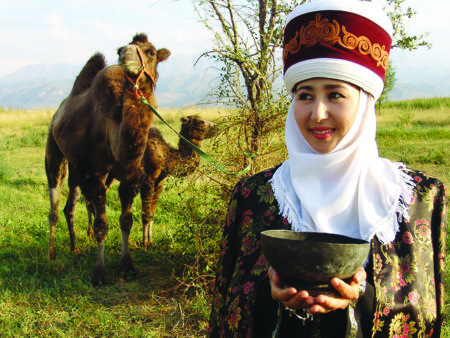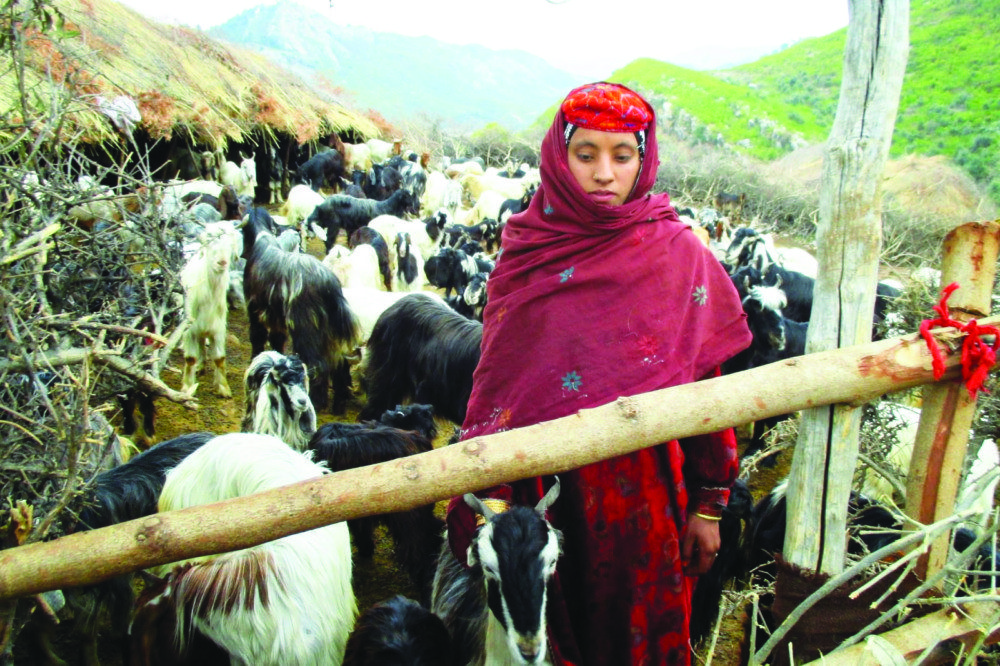A concerned Kyrgyz imam is preoccupied for his daughters’ honor; a bright nomadic Bakarwal girl longs to read and write; an anxious Zhuang parent calls upon ancestors for his son’s schooling; a strong Afar warrior trusts in amulets and incantations to heal; a worried Oromo Hararghe boy imagines his family’s uncertain future; and a Tausug woman fears for the life of her injured rebel husband. What do these individuals and their respective people groups have in common? They represent unreached peoples for whom God has a plan and for whom he invites us to intercede.
The World Mission Prayer League grew out of a God-given burden to pray for the unreached interiors of Africa, Asia and Latin America. Today we remain committed to pray for the advance of God’s kingdom in particular along the frontier of the unreached – “those peoples among whom an indigenous, missionizing, church-planting movement has yet to be established” (Handbook, ¶5) – and as much as possible, along the frontier of limited access – “unreached peoples among whom few missionaries are at work, or traditional missionaries cannot go” (¶21).
You might notice a subtle but significant shift in prayer perspective over time. We began with a geographical image of “frontiers” (the interiors of continents). Now we think of people group frontiers (peoples who, regardless of location, are yet unreached by the gospel message, and especially those with limited access to the gospel). Today’s frontier is not defined primarily by where we work, but for whom we pray, live and work amongst for the extension of God’s kingdom. By bringing clarity and definition to our prayers, as the Handbook does, we contribute to the work of God along those frontiers of unreached peoples, wherever they may be.
Over the past few years our family has alternately vacationed at two locations: a small lake in Ontario (my sister’s cabin) and a large lake in Montana (my in-laws’ cabin). The small lake is fed by slow meandering streams flowing through the rich mineral deposits of the Canadian Shield. The water is refreshing but murky; its reddish-brown oxidizing minerals prevent vision beyond a foot or two. The lake in Montana, on the other hand, is fed by ice melting and rushing from Glacier National Park. It, too, is refreshing! Though sporting a turquoise hue, the lake is beautifully clear by comparison. You can see many, many feet through the water.
Are we, I wonder, sometimes like the small lake – murky and unclear in our prayers for missions and the advancement of the gospel? Or, like the large lake, do we have a clear, crisp, well-defined perspective from which to pray? For whom does God himself call us to pray?
Genesis 10-12 reveals God’s concern for the nations of the world, people groups defined along the lines of ancestral origins and lineage, geographical location, shared language, family and clan social structure, and national identity. In the first book of the Bible, God reveals his concern that these peoples know his goodness by promising to bring forth a people, and in fact a specific person, bearing his loving-kindness for all the nations to experience.
Consider Ahemed of the Afar: his people number 1.8 million in Ethiopia, 400,000 in Eritrea and another 300,000 in Djibouti. Some might count them as three people groups, while others count them across country boundaries and understand them to be just one. By counting the world’s people groups along ethno-linguistic lines such as those found in Genesis 10, and without country boundaries, there are about 9,800 peoples globally. 1

What helps clarify and define our prayers as the World Mission Prayer League is that about 4,000 of these people groups are without an established, witnessing and growing church movement of their own people. These are the frontiers described in our Handbook. Pray that God would prepare these people groups for the coming of the gospel.
Furthermore, we are pressed to pray for harvest workers: Fewer than 10% of all Christian cross-cultural workers worldwide (both within countries and across borders) serve among the frontier of unreached people groups.?2
One unreached tribal group has a gospel witness at Tank Hospital, in South Asia. About half of the 51 million in this people group live in the region surrounding the hospital. The group remains one of the strongest challenges to the movement of the gospel in that entire region. Pray to God for the Good News to reach this people group around Tank, and for the workers there to be a constant and faithful witness.
The great need, the obstacles, and the seemingly never-ending task itself may threaten to overwhelm and discourage us – I know that at times they do me. But be encouraged: clarity and focus in our prayers are not in vain! Author and mission-prayer leader Dick Eastman has written:
No matter what we do in reference to the Great Commission, we should never look at it in a purely general sense. Missionaries do not go into all the world; they go individually into specific parts of the world. Thus, they impact all the world collectively. But only as we accept our individual mission as an intercessor will we make a contribution to evangelizing “all the world.”?3
Dick Eastman, Love on Its Knees
So, for whom do we pray? And how do we pray? We pray for the unreached with as much clarity and definition as we are able – by individual name when we can, by people group as we are informed. We pray for fellow workers serving among them, as well as for those being called to that service. In all cases, we pray that we would be faithful contributors to God’s global mission, for the glory of his Name and the extension of his Church, the living body of Christ.
From the first chapters of Genesis to the last chapters of Revelation, the theme of God’s saving purposes for ethno-linguistic people group-nations is clear – not only as a general perspective, but one that reveals God’s saving plan for all the culturally distinct peoples. Praise God, he has led this organization to be a part in his redemptive story for the thousands of ethno-linguistic nations upon the earth.
Come. Be together in prayer.
Footnotes
- joshuaproject.net/resources/articles/how_many_people_groups_are_there
- internationalbulletin.org/issues/2012-01/2012-01-028-johnson.html
- Dick Eastman, “Love On Its Knees,” in Dick Eastman On Prayer: Three Unabridged Books in One Volume (Grand Rapids: Global Christian Publishers, 1999), pp. 51,52.
